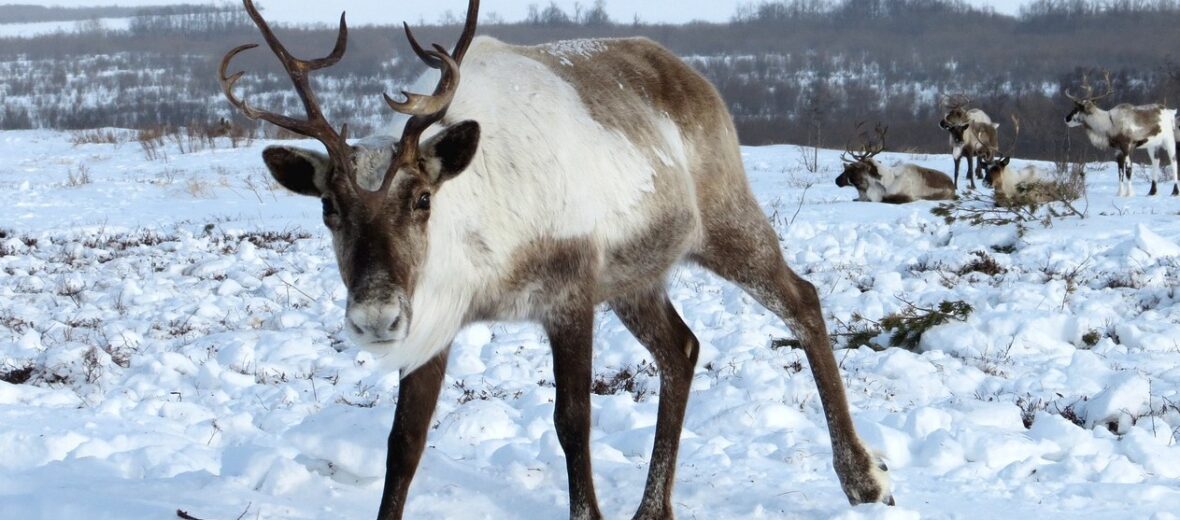
Reindeer (aka caribou), contrary to popular legend do not fly, have red noses, nor do they carry Santa’s sleigh through the skies. That doesn’t mean they aren’t still cool… literally! Hey, they live way up north where it’s always chilly. Even though they number an estimated 2.8+ million strong, these critters are listed as Vulnerable, and their populations are decreasing. This is due to habitat destruction, human interference, invasive species, and disease.
First the Stats…
Scientific name: Rangifer tarandus
Weight: Up to 400 lbs.
Length: Up to 7 feet
Height: Up to 4.9 feet (at the shoulder)
Lifespan: Up to 15 years
Now on to the Facts!
1.) They have specially designed noses with a complex array of blood vessels that warm the frigid air they breathe before it gets to their lungs.
2.) Their hooves may seem a little magical, as they expand in summer when the ground is soft and shrink in winter when the ground gets hard.
3.) Some caribou migrate up to 3,000 miles each year!
4.) Even though reindeer are thought of as living in the tundra, there used to be a species that lived in Southern Idaho. They were over-hunted and driven out. There are conservation efforts in place that are trying bring the species back.
5.) The knees of some reindeer subspecies actually make a kind of clicking noise which helps them locate each other in times of blizzards.
But wait, there’s more on reindeer!
6.) These critters have been herded for centuries by various peoples!
7.) “Reindeer” is Norse, meaning “hreinn” for deer. It doesn’t relate to being reined to a sled. “Caribou” is from the French word “qalipu,” meaning “snow shoveler.”
Did you know…?
Male reindeer lose their antlers in November, however females keep theirs much longer. This means that Santa Claus’ reindeer would have all been female, since they are depicted as having horns on December 24.
8.) Reindeer are herbivores (eat plant matter). Their diet includes herbs, mosses, ferns, shoots, grasses, fungi, and leaves.
9.) In the winter, reindeer have to dig through the snow to find food. They dig using their antlers and munch on energy-packed lichens called reindeer moss.
10.) They are social creatures that live in herds numbering from 10 individuals, to a few hundred. This number can increase to a few hundred thousand in the spring!
Now a Short Reindeer Video!
Also, check out the Critter Science YouTube channel. Videos added frequently!
Want to suggest a critter for me to write about? Let me know here.



